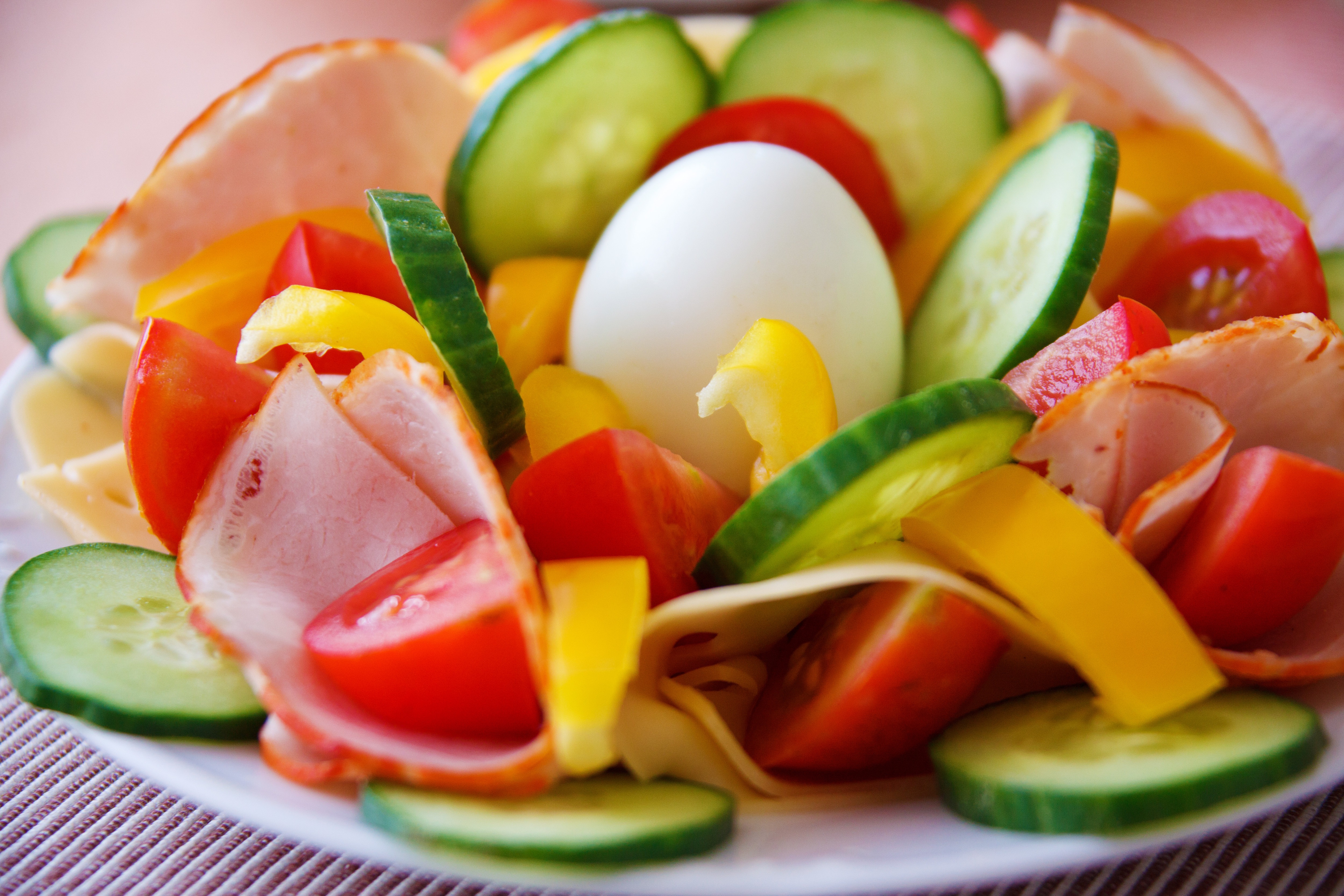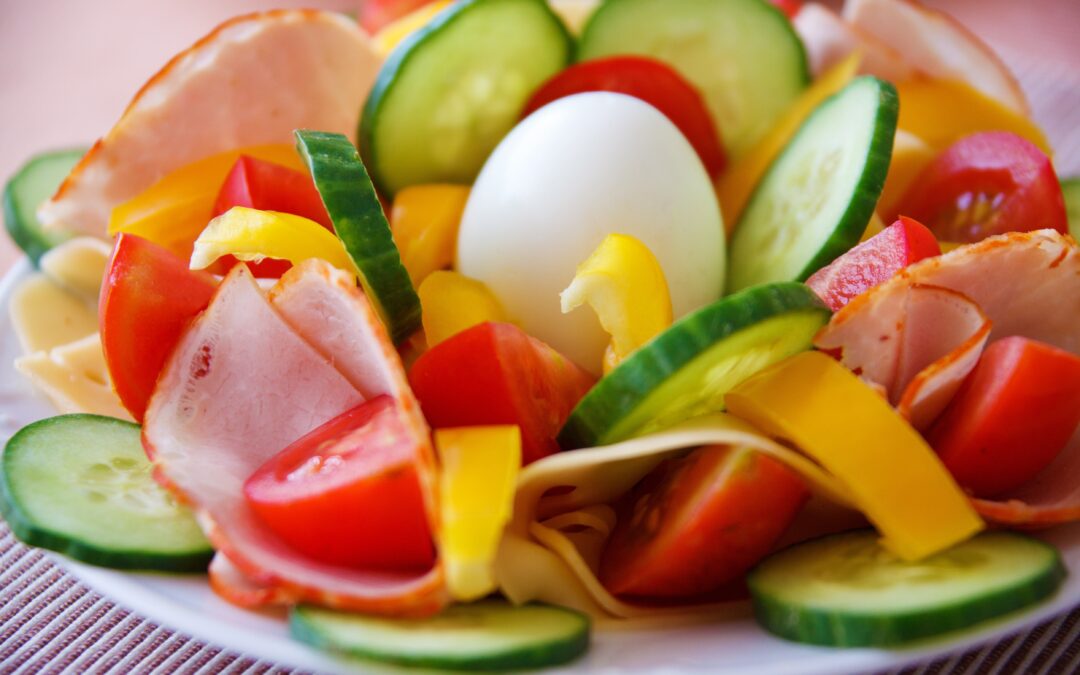 Food Synergy describes the way whole food, when consumed, provides a complex mixture of nutrients that work together in combination with your body to create powerful health benefits.
Food Synergy describes the way whole food, when consumed, provides a complex mixture of nutrients that work together in combination with your body to create powerful health benefits.
I’ve been learning a lot about the important role food synergy plays in our health. We’ve been taught that healthy eating is an easily solved mathematical calculation – simply consume the amount of nutrients based on the FDA’s % of Daily Value. If you prefer to eat foods void in nutrients (such as processed foods) or you dislike veggies, simply take a vitamin. Nutrition has become ‘medicalized’ as we reach for that perfect supplement to “cure what ails you”. The truth is, that’s not enough.
Here’s the problem with the “pill popping” kind of thinking:
- Our bodies have unique ever changing needs based on diet, life style, hereditary, ethnicity and over all health. It’s impossible to know the exact quantities of nutrients at any given moment your body needs in order to maintain optimal health. The incredible truth is, your body intuitively knows and pulls from the foods you eat what it needs (provided your food choices are nutrient rich and offer an array of vitamins and minerals).
- The FDA and supplement industry focuses on only those few isolated nutrients modern science knows about. Relying on supplements to provide your body with what it needs is short-sided. There is a whole new level of research developing, not just on how nutrients interact with each other to increase bioavailability and potency, but on the realization that there is so much more to the natural complexity of how nutrients exist in whole plant-based foods and how our bodies use them.
- Similar to how vitamin deficiencies can cause health issues, too much can result in serious toxicity. We know that, because fat-soluble vitamins/nutrients (Vitamin A, D, E, K, etc.) are stored in the body, in excess they can result in serious health issues; vitamin A can lead to birth defects, vitamin E to hemorrhaging, vitamin K can prevent blood clotting. We used to believe that, when your body consumes an over abundance of water-soluble vitamins/nutrients (Vitamins C, B12, folic acid, etc.), they are excreted through your urine, making it difficult to overdose. However, science is discovering that this is not the case; excess amounts of vitamin B6 can cause nerve problems, vitamin C can lead to kidney stones, and folic acid masks vitamin B12 deficiency. And there is still so much we don’t know simply because the studies have yet to be performed.
- The research industry is constantly changing their minds about what is good for us because results from nutrient research are extremely difficult to decipher, making it easy to misrepresent the findings. How do you know what to believe when the information is misleading, vague or contradictory? Understanding the methodology of reliable research is complicated and time consuming. However, these two books have some great information on how to interpret research studies: Whole by Dr. Collin Campbel and Death by Food Pyramid by Denise Minger.
Although understanding the truth about nutrition is difficult, collectively, research points to the same outcome; consuming natural whole foods has a positive impact on health and poor diets have negative long-term effects. By expanding our research to a more synergistic approach, we will be able to better understand the direct link between diet and health.
Here’s what we already know:
- Nutrients in their natural food form are best adapted to the human digestive system; the body knows what to use and what to discard.
- The interaction of nutrients found in whole foods provides health benefits that outweigh each food’s individual nutrient. Although it’s tempting to purchase that prepackaged health food product whose label proclaims health benefits, the produce aisle of the grocery store can offer more effective long term benefits. The trick is knowing how to structure your diet to maximize the value of the food you consume. Read our future blogs and visit our blog archives to learn more about the health benefits of specific foods.
- Many case studies have already proven the powerful effect of whole plant-based food on health in reducing blood pressure and curing diabetes, heart disease and even cancer. Why aren’t we paying attention?
So, the next time you’re hungry, reach for whole food plant-based options. Your body will love you for it!
Interesting Reads:
- The US National Library of Medicine abstract, “Food synergy: the key to a healthy diet”
- The Permanente Journal article, “Nutritional Update for Physicians: Plant-Based Diets”
- Dr. Linda Carney article, “Whole plant food diet suppresses cancer cells”
- The American Journal of Clinical Nutrition article, “Plant-based foods and prevention of cardiovascular disease”
- The Huffington Post article, “A Solution For Diabetes: A Plant-Based Diet”


I find your blogs well researched and informative. Learning something new in the world of food, a world that is changing and evolving through science and research, spurs my resolve to try something new.
This tomato season in Northern California is burgeoning with small farms that supply veggies fresh farm to table Yesterday processed 40 lbs of tomatoes to make sauce.This following recipe of Gazpacho was the salad for our dinner..
When asking how do I even begin the daunting effort move toward a pant-based diet, I suggest you take one recipe at a time. Start it in the morning and refrigerate to enjoy as a salad.
No cooking necessary. It can be left chunky, with vegetables crisp or it can be pureed to your liking. A food processor will speed the chopping time of veggies
Gerry’s Gazpacho
Ingredients:
2 1/4 peeled, or not, seeded, or not, chopped red tomatoes, the sweetest you can find
4 cups tomato juice
1/2 cup minced red onion
1 clove garlic, minced
1 medium bell pepper, minced
1 peeled, seeded, diced, cucumber
2 scallion, finely sliced
1/2 fresh jalapeño, minced, seeded or not
1 cup minced celery
Juice of 1/2 lemon +1 lime
2 Tbsp. Balsamic vinegar, or to taste
1 tsp both of dried tarragon and basil, or three Tbsp. fresh
1/2-1 tsp. cumin
1/4 cup freshly minced parsley
1/4 cup minced cilantro
1-2 Tbsp. olive oil (optional)
Salt, black pepper and cayenne to taste
Directions:
1. Combine first 10 ingredients. Stir well. Puree at this point id desired.
2. Add remaining ingredients and stir and chill.
Very educating !! So great to have something like this out here 😀 Love, Anna
https://annadaftari.wordpress.com/